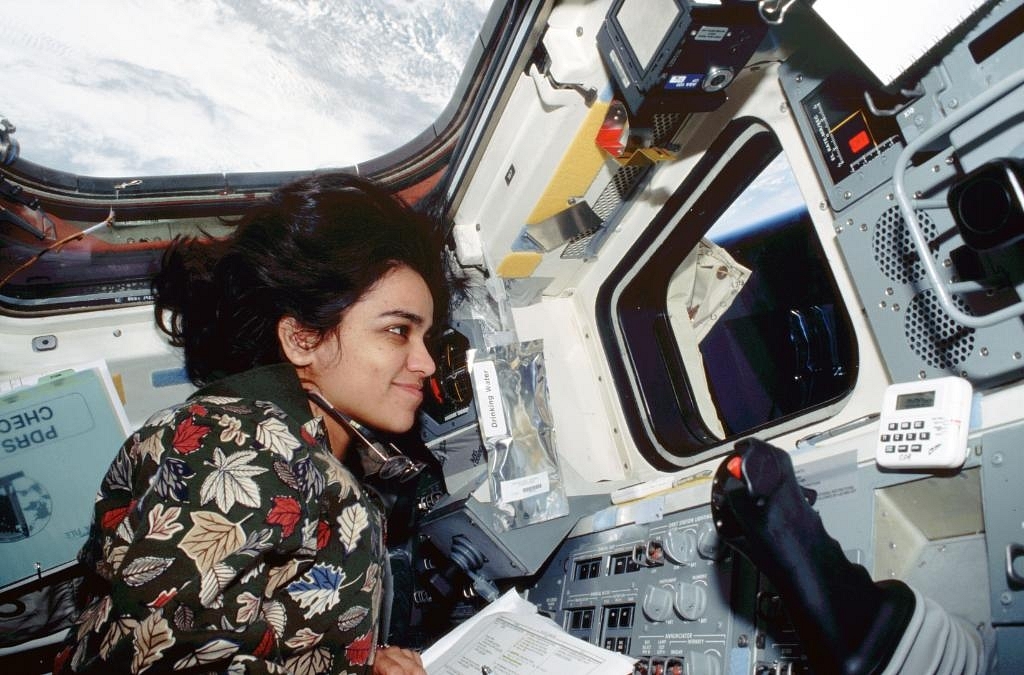News Brief
American Spacecraft Named After Former Astronaut Kalpana Chawla
- On 29 September, the “S S Kalpana Chawla” will lift off on board the Antares space launch vehicle from the Wallops Island launch site in Virginia, United States.

Kalpana Chawla (Photo: Women@NASA/Twitter)
The American aerospace, defence, and security company Northrop Grumman has named its NG-14 Cygnus spacecraft after former astronaut Kalpana Chawla.
“Chawla was selected in honor of her prominent place in history as the first woman of Indian descent to go to space,” the company’s Cygnus NG-14 mission page reads.
Northrop Grumman has a tradition of naming each of its Cygnus vehicles. They pick a person who has made a significant contribution to human spaceflight. Chawla fit the bill.
Chawla and the rest of the STS-107 mission crew lost their lives in 2003 after the Space Shuttle Columbia disintegrated upon re-entering the Earth’s atmosphere, 16 minutes prior to scheduled landing at Kennedy Space Center. The tragic event left the world in shock and disbelief.
Just as in the case of the Challenger catastrophe in 1986, the fate of the 2003 mission was sealed soon after launch when a piece of insulating foam broke loose from the external fuel tank and damaged the left wing. The spacecraft injury was exacerbated upon exposure to hot gases during re-entry before it met with untimely demise.
The STS-107 had served as a dedicated science and research mission where about 80 experiments were conducted over 16 days of flight time. Chawla was a mission specialist on the team.
Kalpana Chawla was born in Karnal, Haryana, in 1962. She completed her schooling in home town Karnal before moving to Chandigarh for undergraduate studies in aeronautical engineering at Punjab Engineering College. She then left for the United States (US) in pursuit of advanced degrees and picked up Master’s and Doctor of Philosophy degrees specialising in aerospace engineering.
In 1988, she began her career at NASA Ames Research Center with work on computational fluid dynamics. It took six more years before she was chosen to join the astronaut corps. In the intervening period, she became a naturalised US citizen.
In 1996, she became the first woman of Indian origin to fly in space; she was a mission specialist and prime robotic arm operator on the STS-87 aboard the Space Shuttle Columbia.
Her second spaceflight experience, six years after STS-87, turned out to be ill-fated.
She had spent 30 days, 14 hours, and 54 minutes in space across both her missions.
On 29 September, the “S S Kalpana Chawla” will lift off on board the Antares space launch vehicle from the Wallops Island launch site in Virginia, United States. (The launch can be watched live on NASA’s YouTube page.)
The NG-14 mission will involve Cygnus delivering over 3,600 kg of cargo to the International Space Station. It will take two days to get up there.
After completing cargo delivery, the spacecraft will re-enter the Earth’s atmosphere and come apart over the Pacific Ocean.
Support Swarajya's 50 Ground Reports Project & Sponsor A Story
Every general election Swarajya does a 50 ground reports project.
Aimed only at serious readers and those who appreciate the nuances of political undercurrents, the project provides a sense of India's electoral landscape. As you know, these reports are produced after considerable investment of travel, time and effort on the ground.
This time too we've kicked off the project in style and have covered over 30 constituencies already. If you're someone who appreciates such work and have enjoyed our coverage please consider sponsoring a ground report for just Rs 2999 to Rs 19,999 - it goes a long way in helping us produce more quality reportage.
You can also back this project by becoming a subscriber for as little as Rs 999 - so do click on this links and choose a plan that suits you and back us.
Click below to contribute.
Latest